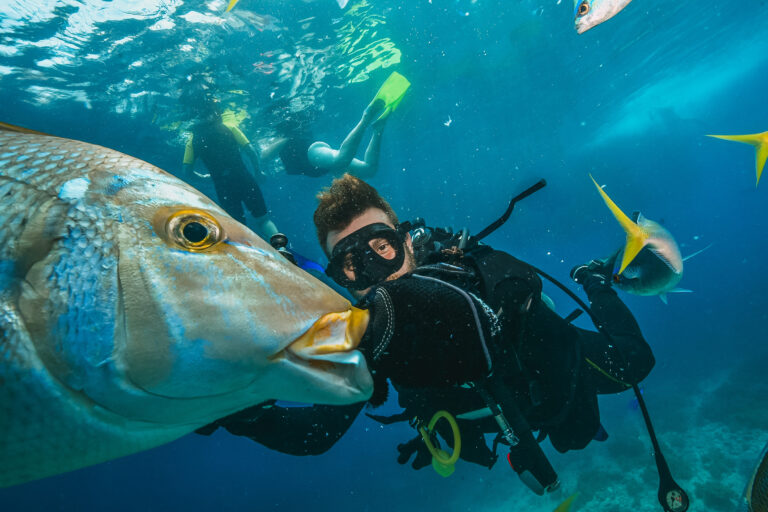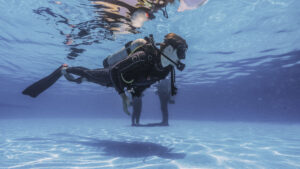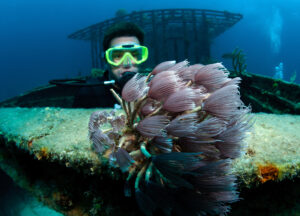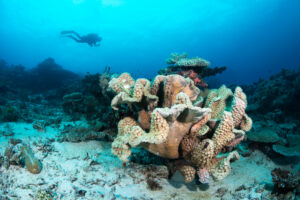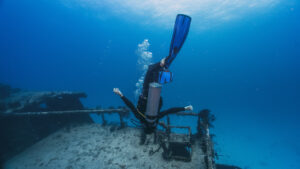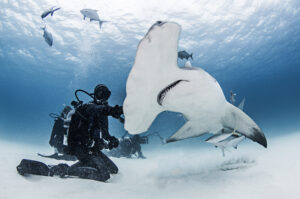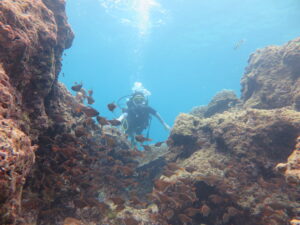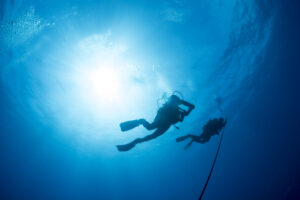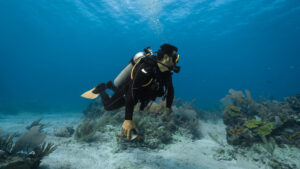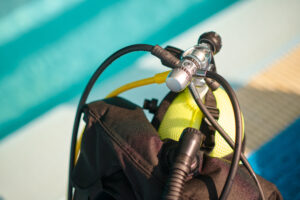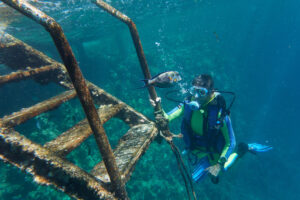What is a A-Clamp Fitting in Scuba Diving?
A-Clamp Fittings, also known as yoke fittings, are a critical component of scuba diving gear. They bridge the gap between the regulator – the device that allows divers to breathe underwater – and the air tank, serving as the connecting link in the entire system. This connection is vital for the functionality and safety of the dive, making the A-clamp fitting a fundamental consideration for any diving enthusiast.
A-Clamp Fittings have been part of diving gear since the advent of the sport, demonstrating resilience and reliability over the years. Their simple design, high-pressure tolerance, and fail-safe mechanism have made them a favorite among divers worldwide. Despite the emergence of other types of fittings, the A-clamp fitting has held its ground, with many divers preferring it for its familiarity and ease of use.
Design and Operation of A-Clamp Fittings
A-Clamp Fittings are aptly named for their A-shaped design. They consist of a metallic yoke that fits over the valve of the diving cylinder, a screw mechanism that tightens the yoke onto the valve, and an O-ring to ensure an airtight seal. When properly attached, the A-clamp fitting holds the regulator securely onto the cylinder valve, enabling a secure and continuous flow of air to the diver.
The operational simplicity of A-Clamp Fittings is one of its main advantages. To attach the regulator to the cylinder, the diver simply opens the yoke, places it over the valve, and tightens the screw mechanism. The O-ring creates an airtight seal, preventing any leakage of air. This ease of operation, coupled with the reliable connection it provides, makes the A-clamp fitting a highly efficient part of the diving gear.
Components of A-Clamp Fittings
The yoke is the main component of the A-Clamp fitting, typically made of durable and corrosion-resistant metals such as brass or stainless steel. Its design enables it to withstand high pressures, contributing to the safety of the diving gear.
The screw mechanism, also made from robust materials, is used to tighten the yoke onto the valve. It’s designed to be easily operated, even with diving gloves on.
The O-ring, usually made of rubber, is a small but crucial part of the A-clamp fitting. This component is responsible for sealing the connection between the regulator and the cylinder valve, preventing air leaks and maintaining a stable air supply for the diver.
Maintenance of A-Clamp Fittings
A-Clamp fittings require regular maintenance to ensure their functionality and longevity. The yoke and the screw mechanism should be regularly inspected for any signs of corrosion or damage, and the O-ring should be checked for wear and tear. Any damaged components should be replaced immediately to prevent any risk to the diver.
After each dive, A-Clamp fittings should be rinsed thoroughly with fresh water to remove any salt, sand, or other particles that may have been deposited during the dive. This simple step can significantly extend the lifespan of the fitting and maintain its reliability.
A-Clamp Fitting and DIN Thread Connection
A-clamp fittings are designed to connect with CGA 850 “international” connection cylinder valves. These valves are widely used in diving cylinders across the world, making A-clamp fittings universally compatible with many diving gear setups. However, there are other types of connections used in diving, one of which is the DIN (Deutsche Industrie Norm) thread connection.
DIN threads are an alternative to A-clamp fittings, designed to screw directly into the valve
of the cylinder. They offer certain benefits, such as a more compact design and a higher pressure tolerance, making them favored for technical diving and deep dives. However, they require a specific type of cylinder valve, which is not as universally available as the CGA 850 valve.
Adapting A-Clamp to DIN Connection
Given the advantages of DIN connections, particularly for advanced diving activities, there may be situations where a diver equipped with an A-clamp regulator wishes to use a DIN valve cylinder. This is where adapters come into play. These devices allow an A-Clamp fitting to be connected to a DIN valve, providing the benefits of both systems.
The adapter works by providing a bridge between the two different connection types. One side of the adapter is designed to attach to the A-clamp fitting, just as a regular cylinder valve would. The other side is threaded, allowing it to screw into a DIN valve.
Adapters are typically compact and lightweight, making them easy to carry and use. They enable divers to utilize any available air source, regardless of the connection type, which can be particularly valuable in remote diving locations where specific equipment may be scarce.
Considerations When Using Adapters
While adapters provide flexibility, they also introduce an additional point of potential failure in the diving system. Therefore, divers should ensure that their adapters are of high quality, properly maintained, and correctly installed to avoid any issues during the dive.
The O-ring on the adapter is of particular importance, as it ensures an airtight seal between the A-clamp fitting and the DIN valve. As with any O-ring, it should be regularly inspected and replaced if any wear or damage is observed.
It’s also important to note that while adapters allow A-clamp regulators to be used with DIN valves, they do not increase the pressure rating of the regulator. Therefore, divers should ensure they do not exceed the maximum pressure rating of their regulator, even if the DIN cylinder is capable of higher pressures.
Filling Whip with A-Clamp Fitting and DIN Connection
A filling whip is a flexible hose used to fill diving cylinders with air or other breathing gases. One end of the whip is attached to the gas source, and the other end is connected to the cylinder to be filled. This connection can be made using either an A-clamp fitting or a DIN connection, depending on the valve of the cylinder.
Filling Whip with A-Clamp Fitting
When using an A-clamp fitting on a filling whip, the whip is attached to the cylinder in much the same way as a regulator. The yoke of the fitting is placed over the cylinder valve, and the screw mechanism is tightened to create a secure connection. The O-ring ensures an airtight seal, allowing the cylinder to be filled without any gas leakage.
This method of connection is simple and straightforward, making it ideal for quick and efficient cylinder filling. However, it’s worth noting that the maximum pressure that can be used with an A-clamp fitting is typically lower than that of a DIN connection.
Filling Whip with DIN Connection
When a filling whip is equipped with a DIN connection, it can be screwed directly into the valve of the diving cylinder. This provides a very secure connection that can withstand higher pressures, making it ideal for filling high-pressure cylinders.
However, using a DIN connection requires a bit more time and effort, as the connection must be screwed in and out for each cylinder fill. Additionally, DIN connections are not compatible with CGA 850 valves unless an adapter is used.
Both types of connections have their own strengths and are suited to different situations. Divers and equipment operators should choose the one that best suits their needs and equipment configuration.
Safety Precautions with A-Clamp Fittings
In the realm of scuba diving, safety always takes precedence. While the A-Clamp fitting is generally considered to be safe and reliable, there are certain precautions that divers should take to ensure the secure functioning of this component.
Correct Installation
Correct installation of the A-Clamp fitting is crucial to its performance. The yoke must be properly positioned over the valve, and the screw mechanism must be tightened just enough to ensure a secure connection without over-tightening, which can damage the fitting or the valve.
The O-ring must also be properly seated in its groove to create an airtight seal. Any misalignment or damage to the O-ring could lead to a gas leak, which could be dangerous during a dive.
Regular Inspection
Regular inspection of the A-Clamp fitting is an essential part of dive gear maintenance. Divers should check the condition of the yoke, the screw mechanism, and the O-ring before each dive and after any significant impact or rough handling of the gear.
Any signs of corrosion, damage, or wear should be addressed immediately. If the O-ring is damaged or worn, it should be replaced before the gear is used. If the yoke or screw mechanism is damaged, the fitting may need to be replaced entirely.
Evolution of the A-Clamp Fitting
Over the years, the A-Clamp fitting has seen modifications and improvements, primarily aimed at enhancing durability and ease of use. These changes have helped keep the A-Clamp fitting relevant in the face of competition from other types of connections.
Material Innovations
Initially, A-Clamp fittings were primarily made from brass, a material known for its strength and resistance to corrosion. However, advancements in material science have introduced other options, like stainless steel and even titanium, which offer superior strength and corrosion resistance.
This evolution in materials has increased the longevity of A-Clamp fittings, reducing the frequency of replacements and lowering the long-term costs for divers.
Design Improvements
In addition to material innovations, design improvements have also been made to A-Clamp fittings. For instance, changes in the design of the yoke and the screw mechanism have made the fitting easier to attach and detach, even with gloved hands.
Furthermore, enhancements in O-ring technology have led to more durable and reliable seals, reducing the risk of gas leaks and contributing to a safer diving experience.
Environmental Impact and Sustainability
As with all aspects of scuba diving, consideration for the environment is paramount. The A-Clamp fitting, being a small but essential component of diving equipment, also plays a role in the overall environmental impact of the sport.
Durability and Waste Reduction
The robust design and durable materials used in A-Clamp fittings contribute to their longevity. This reduces the need for frequent replacements, leading to less waste generated over the lifetime of a diver’s gear.
Moreover, by opting for high-quality fittings and maintaining them properly, divers can extend the lifespan of their gear even further, contributing to sustainable diving practices.
Responsible Disposal and Recycling
When an A-Clamp fitting does reach the end of its useful life, it’s important to dispose of it responsibly. Many parts of the fitting, especially those made from metals like brass or stainless steel, can be recycled.
Some manufacturers and dive shops offer recycling programs for old or damaged diving gear. By making use of these programs, divers can help ensure that the materials in their A-Clamp fittings are reused, reducing the environmental impact of their diving activities.
Key Takeaways
The A-Clamp fitting has proven its worth in the scuba diving world. Its simple design, easy operation, and reliable performance have made it a staple in diving gear across the globe.
While alternative fittings like DIN connections offer certain advantages, the A-Clamp fitting remains a popular choice for many divers due to its universal compatibility with CGA 850 valves. The use of adapters also allows A-Clamp regulators to be used with DIN valves, providing divers with additional flexibility.
The A-Clamp fitting’s role in the filling whip setup further extends its utility, allowing for efficient and secure filling of diving cylinders. Whether it’s being used to connect a regulator to a cylinder or a filling whip to a gas source, the A-Clamp fitting plays a vital role in ensuring a safe and enjoyable diving experience.
As with all diving equipment, regular inspection and maintenance of A-Clamp fittings are crucial to ensure their longevity and safe operation. By taking these simple precautions, divers can continue to rely on their A-Clamp fittings for many dives to come.

